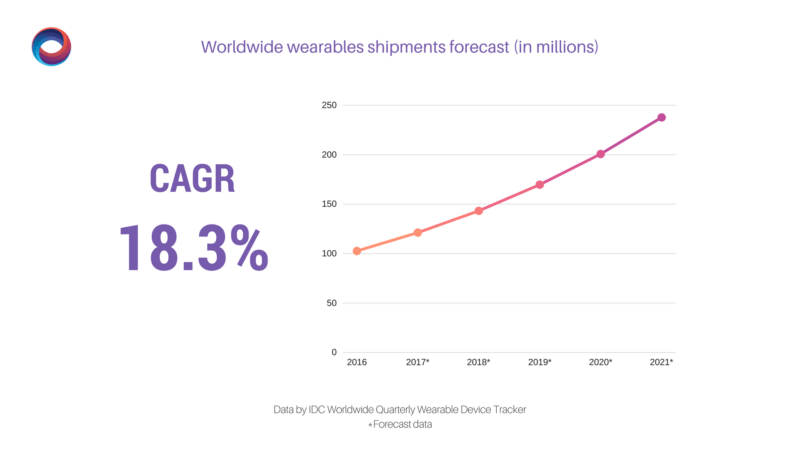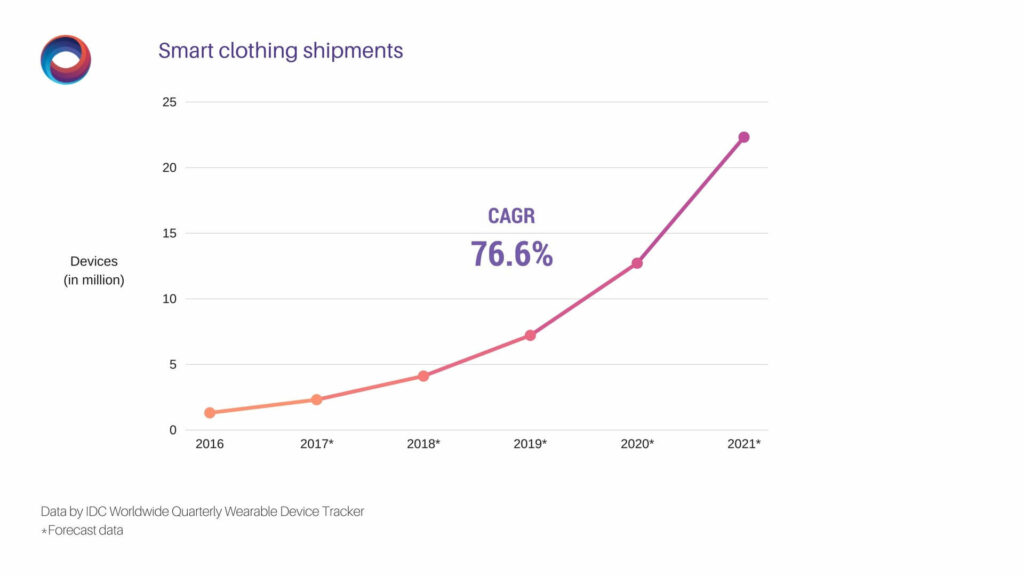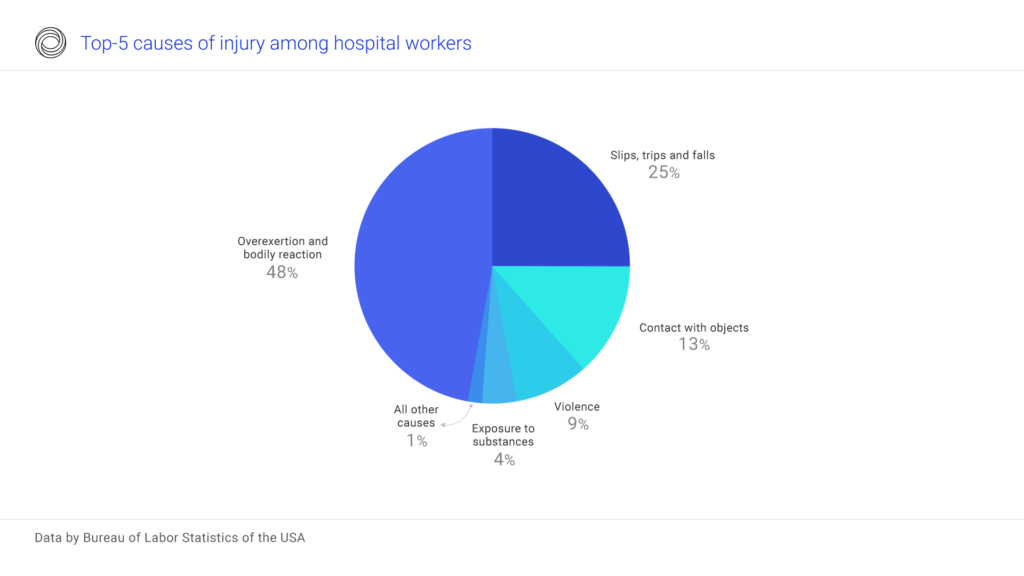Many today tell stories of success… Sharing failures and ways to overcome them started to be even in greater request. TESLASUIT team has both of them. However, that’s nothing the future can’t fix. It will be the story of the future. Tomorrow, as we see it. In accordance with this vision, the team is building its strategy and developing the product as a wearable computer for games.
The computer has not been transformed qualitatively for the last 30-40 years. Quantitative indicators gradually changed upwards and case dimension moved downwards.
Today PC is an auxiliary thing. That’s why we did not notice how it has been evolving. The performance of iPhone 4 is comparable to the performance of supercomputer of 1985, Cray-2. We just take it for granted.
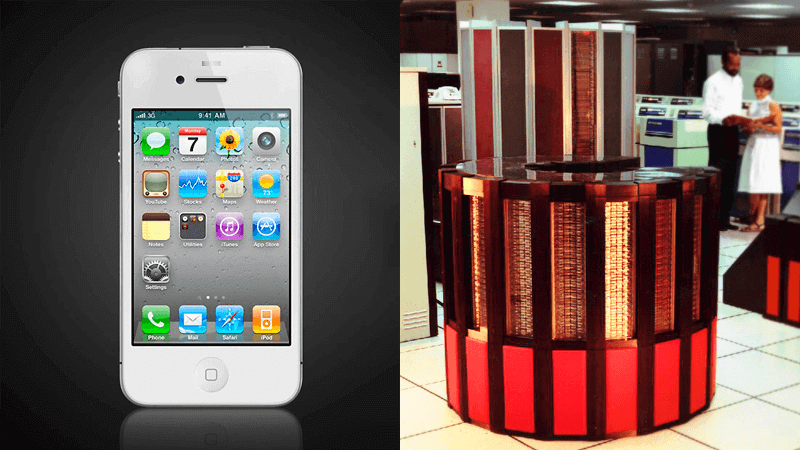
The computer is now placed in a mobile phone and almost useless without the Internet and applications. That is, we are gradually moving to the fact that the user interface will be in the limelight. What you see, hear, feel, how mobile you are while using the device, will determine to what extent you are satisfied with the availing experience of the device/content consumption. The computer becomes a means of communicating with reality. For sure, it would be very convenient if the computer did not exist in the physical realm that there was no intermediate link in this communication.
Thus, the requirements for the computer will be increased in terms of miniaturization, performance improvement, and ease of use and wearing. We have come to the conclusion that in the near future a modern computer is a convenient, light, mobile device that which provides freedom of movement.
The category of devices that are now more and more like computers and replace phones are wearables. That is, system unit and control elements will be clipped on the body, and display will be located in front of the eyes like in AR technology.
Brief wearables market overview
IDTechEx predicts that the total revenue on wearables market will amount to $ 150 billion in 2026. It is expected that the indicator will rocket between 2018 and 2023.
Why is the wearables market expected to show such a rapid growth?
FBIC Retail and Technology in its report “The Wearables Report 2016” connects this trend with 2 main factors.
Firstly, previously wearable devices were only an addition to the smartphone, but now so-called second-generation wearable electronics is becoming more widespread. Its peculiarity is the ability to interact with other similar devices and connect independently to the Internet of Things and the Internet of Everything.
Secondly, experts believe thaе market supply increase will be due to the boom of smart clothing segments, in particular, sportswear. Such world-famous brands as Google, Nike and Levi’s that offer a wider range of products will be behind it.
There is another interesting forecast is by International Data Corporation (IDC). The agency predicts that about 240 million wearable devices will be shipped in 2021. By comparison, a shade over 100 million was shipped in 2016. At the same time, the compound annual growth rate will work out at 18.3%.
There is a wide array of wearables, from smartwatches to exoskeletons for medical and military use. So which one will become a new form factor of PC, wearable computer?
The greatest comfort and freedom of movement are provided by the thing that we all carry about with us every day. And it’s not glasses or an audio headset … It’s clothes. Smart clothing.
Smart clothes as the future wearable computer
Here are explicit advantages of smart clothes by contrast to other wearables:
- flexibility;
- wireless connection;
- a large surface (body) for reading out data;
- freedom of movement;
- invisible sensors (others may not even realize that you are wearing smart clothes);
- relatively / potentially low-cost fabrication.
Modern smart clothes are made of stretching material, can be printed on a 3D printer (conductive inks), contains sensors that read several types of data at once. It can be washed together with sensors with no need for removing them.
IDC report “Worldwide Quarterly Wearable Device Tracker” presents data showing that 22.3 million pieces of smart clothing will be shipped in 2021. Experts from Tractica, the research company on human interaction with technologies predict, even larger numbers: 24.8 million devices. The CAGR will be 76.6% from 2016 to 2021. This is the largest numerical rating on the whole wearables market.
What is smart clothing used for?
Currently, smart clothing is typically used to measure the level of physical activity, monitoring the process of eating and sleeping in order to maintain or improve the health quality. Here are the properties of clothes that were in demand some time ago and will remain so, but in the future, their availability will not allow us to call clothing “intellectual”, or “smart”:
- high conductivity;
- antibacterial, antiseptic, disinfecting qualities;
- repulsion of must and dust particles;
- water-resisting properties;
- soiling resistance;
- cooling;
- heating;
- protection from injury;
- resistance to extreme physical exertion.
Previously, the task was to find a fabric with suitable properties for a certain environment, now it is to make the fabric that adapts to external conditions itself. Such clothing is already can be called wearable computer.
The point at issue is about third generation smart clothing. It is much more advanced. It can perceive not only disaggregated data types, but also make predictions and adapt to the external environment without prior configuration. Such clothing functions like human brain thanks to the built-in microcomputer.
Third generation smart clothing is wearable computer
Smart clothing as a biometric trainer
Biometric information is a set of unique characteristics of a particular person.
Sports smart clothing can not only measure heart rate and breathing rates, but it can also provide personal recommendations for your activity (regardless of whether it is running or training in the gym).
Here is an incomplete list of biometric characteristics which smart clothing already works with:
- electrocardiographic diagnostics (ECG);
- electromyographic diagnostics (EMG);
- monitoring and control of temperature;
- monitoring of the level of enzymes and coenzymes;
- measurement of breath characteristics.
Artificial intelligence as part and parcel of wearable computer
Smart clothing collects a huge amount of data by virtue of an increasing number of sensors. Nonetheless, the law of ever-increasing demands will soon prove that this consumer is not enough encouraged by.
How about that wearable computer will teach you to dance or play billiards? Motion capture technology allows realizing this.

Motion capture technology
The motion capture system tracks movements and displays them in 3D. At the same time, a digital visual representation (avatar) of the user is created, providing an additional degree of personalization. This technology is already used by athletes. The transmission of live data during training in smart clothing/wearable computer allows athletes and coaches tracking the state of the athlete and level of performance. The motion capture system brings lessons of ordinary users closer to the professional level.
Someone probably thought: “You can just find a video on the Internet, as professional billiard players perform or professional artists dance and repeat.” But what if we add haptic feedback to the motion capture?
Haptic feedback system
Imagine that every time when you make a movement incorrectly during training, the corresponding part of the body receives a tactile response. Thus, muscle memory or motor learning is activated and outperforms. It works on the principle of memorizing the motor task by repetition. Just in smart clothing case, incomparably fewer repetitions are needed. Ultimately, the exercise comes into a long-term muscle memory, which subsequently allows it to be performed without a conscious effort. Such principle of training received the name “passive haptic learning” (PHL) within the scientific community.
This method provides an opportunity to accelerate the learning process of any activity (not only the motor activity), from Morse code to more complex processes like dancing, playing guitar or martial arts. By the way, researchers at the Georgia Institute of Technology have created a system that teaches Morse code in just 4 hours.

TESLASUIT team holds a genuine belief that the haptic technology adoption in smart clothing/wearable computer will lead us to a new era when we can try a variety of all-new experiences in virtual worlds, feeling them.
Climate control
The microclimate has a significant impact on the human body. All life processes in the human body provide energy for motor activity. The smaller part of it is spent on doing useful work, and the majority is converted into thermal energy. Continuous heat production into the environment ensures the normal course of physiological processes.
The study of runners participating in the mountain marathon Ultra-Trail du Mont-Blanc (UTMB) was undertaken.
The results showed that the runners managed to keep 100% focus on the race until their t-shirts became wet. Since the moment when some part of the body feels discomfort, the focus is no longer absolute. Up to 8% of the runner’s mental activity was occupied by the discomfort, which reduced productivity.
This can be extrapolated for any activity. Not without reason excessive cold or heat is considered unfavorable working conditions. Сoncentration decreases, mental activity slows down and, ultimately, activity and efficiency decrease.
Effective climate control is a combination of sweat expulsion system and comfortable temperature maintenance. These are not new properties of smart clothing, but they have not become widespread yet. Сlimate control will be embedded into the clothing by default and these functions will not be purely utilitarian. They will also be distributed in the entertainment sector. You feel heat in the distance when a fire is shown on the screen in the cinema. Although while it is uncertain whether the screen itself will remain or it will be an entirely immersive space, in the center of which there is no longer an observer, but an experiencer…

Integration with the Internet of Things and the Internet of Everything
Another necessary attribute of competitive smart clothing will be media control.
Smart clothing through the sensors, in which personal data is embedded, can open the front door when you carry heavy furniture or purchases from the store. When your temperature rises, clothing signals about it and reduces the air temperature, turning on the air conditioner.
In the future smart clothing/wearable computer will allow set everything to obviate the need to push the button.
How will smart clothing/wearable computer change traditional business?
So far, the smart clothing market is revolving around sports, fitness and healthy lifestyle. Many experts believe that smart clothing will replace smartwatches and fitness trackers in the near future. Smart textiles provide greater accuracy of reading data due to the possibility to place sensors on clothing anywhere. Furthermore, it is capable of performing niche functions such as, for example, tracking muscle activity, speed and step length (for shoes).
Yet, the great strength of smart clothing lies outside sport. The first area where smart clothing can be massively introduced is service sector. Uniforms for airlines, hospitals, railway companies, road workers and other professions related to security will not be able do without sensors and network of communications in the workplace.
First of all, smart clothing/wearable computer will be used in areas where there is a possibility to save on business processes. And not only in commercial organizations, but also in non-profit organization.
Let’s look at the case of the injuries’ problem in the workplace in the medical field in the USA and how much it costs hospitals.
The problem of injuries in the workplace
The costs of spending on social areas, such as health, law enforcement and construction have been growing at a significant pace for decades. One of the main reasons is damage to the health of personnel.
Even one injury can cause a chain reaction and increase the costs of both public and private institutions. There is a need to seek replacement of the staff member for an indefinite period or increase the burden on current employees, which negatively affects their effectiveness. In addition to increasing costs, many institutions (for example, such as hospitals) are also legally bound to provide staff with safe jobs. Having suffered an injury in many cases, workers are entitled to get sickness benefits, as well as moral compensation for the damage caused.
According to US Bureau of Labor Statistics as at November 2016, the highest level of injuries was among police and sheriffs patrol officers. In 2015, 5% of these employees (498 cases per 10000) were injured. The second place is occupied by correctional officers and jailers (420 cases per 10,000). The third and fourth place are occupied by firefighters (398) and nursing assistants (349).
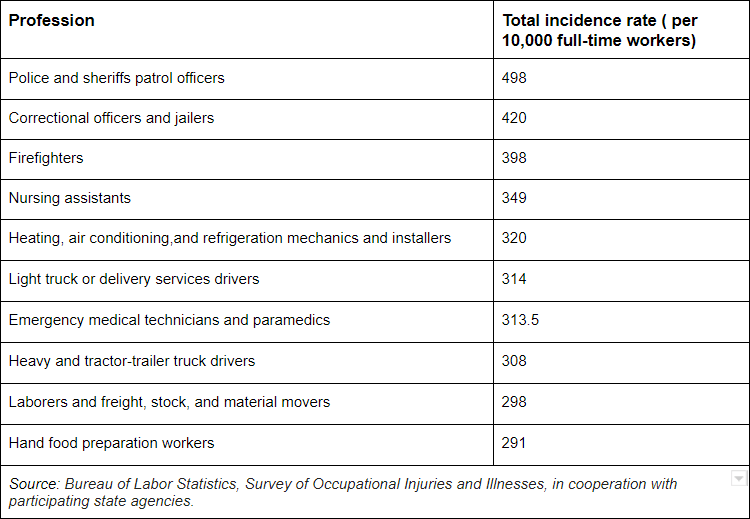
Take, for example, a category with one of the highest levels of injuries: nursing assistants. Hospitals pay a high price for the injury of their nursing staff. The table below deals with the cost of one injury case, as estimated by Occupational Safety and Health Administration (OSHA).
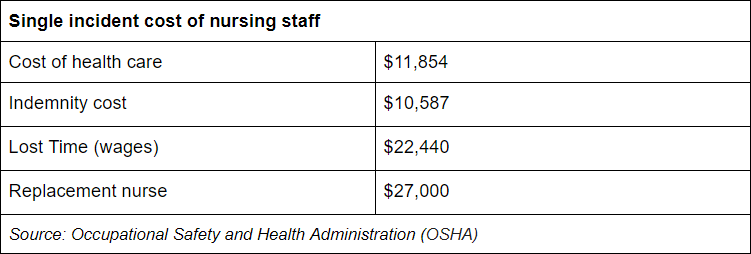
According to the US Occupational Safety and Health Administration (OSHA), there are about 4 million nurses in the USA alone. In the EU, there are 2 million. If we take the statistics on the number of injuries, then by the most modest estimates, the total costs amounted to $ 1.7 billion. The top preliminary estimate was $ 3.5 billion.
At the same time, US healthcare market will grow due to Affordable Care ACT and higher life expectancy. In this regard, the health care system will need even more nurses. It is expected that their number will increase by 16% until 2024.
According to Bureau of Labor Statistics, survey of occupational injuries and illnesses, the majority of injuries to hospital staff are due to several well-known causes. They are illustrated with pie chart below.
Almost half of injuries (48%) leading to absenteeism owing to illness are caused by overexertion and bodily reaction. That is, they could easily be prevented and hence, significantly reduce the costs associated with them.
This is possible due to improved quality of employee behavior monitoring and workplace conditions. Such data, combined with predictive analysis and individual analysis for each employee, will make hospitals a safer place to work.
Wearable computer solves the technical problem of identifying the causes of injuries in the workplace and can predict critical situations before they occur. Analyzing personal data in combination with an artificial intelligence analytics can significantly reduce the number of personnel injuries and improve efficiency in the work (for example, patient care for medical personnel).
In general, the goal of smart clothing as a professional uniform in any field is the analysis of big data to prevent dangerous situations in real time. It can be used to create a monitoring and recommendations’ system.
This is only one example of using smart clothing and only in the medical sector.
Conclusion
Smartphones can not withstand competition with clothes, because people are too accustomed to comfort and are ready to pay for it. And in many ways, smart clothing outstrips smartphones in a functional way, in particular, in reducing business costs.
Once the boundary between ordinary clothing and smart clothing will erase. There will be no difference between clothing and computer. Perhaps, even the term “smart clothing” will disappear, as all clothes will be fitted with electronics and produced from smart textile, and will also become a wearable computer.
TESLASUIT has already taken certain steps in this direction. We are working on the future.


